- Home
- Simon Winchester
The Perfectionists Page 2
The Perfectionists Read online
Page 2
That, said Mr. Povey, was his understanding of the theory of the thing. Yet he also had a personal reason for suggesting the idea, and to illustrate it, he told me the following tale, which I offer here in summary, a mix of precision and concision:
Mr. Povey Sr., my correspondent’s father, was a British soldier, a somewhat eccentric figure by all accounts who, among other things, classified himself as a Hindu so that he would not be obliged to attend the normally compulsory Sunday Anglican service. Not wishing to fight in the trenches, he joined the Royal Army Ordnance Corps, the body that has the responsibility of supplying weapons, ammunition, and armored vehicles to those soldiers who used such things in battle. (The RAOC’s functions have since expanded, and now, less glamorously, it also runs the army’s laundry and mobile baths and does the official photography.)
During training, he learned the rudiments of bomb disposal and other technical matters, excelling at the engineering aspects of the craft, and thus qualified, he was sent in 1940 to the British embassy in Washington, DC (in secret, and wearing civilian clothes, as the United States had so far not joined the war). His duties were mainly to liaise with American ammunition makers to create ordnance that would fit into British-issued weapons.
In 1942, he was given a special mission: to work out just why some American antitank ammunition was jamming, randomly, when fired from British guns. He promptly took a train to the manufacturers in Detroit and spent weeks at the factory painstakingly measuring batches of ammunition, finding, to his chagrin, that every single round fitted perfectly in the weapon for which it was destined, meeting the specifications with absolute precision. The problem, he told his superiors back in London, did not lie with the plant. So London told him to follow the ammunition all the way to where the commanders were experiencing the vexing misfires, and that was in the battlefields of the North African desert.
Mr. Povey, lugging along his giant leather case of measuring equipment, promptly lit out for the East Coast. He first traveled on a variety of ammunition trains, passing slowly across the mountains and rivers of eastern America, all the way to Philadelphia, whence the ordnance was to be shipped. Each day, he measured the shells, and found that they and their casings retained their design integrity perfectly, fitting the gun barrels just as well at each of the railway depots as they had when they left the production lines. Then he boarded the cargo ship.
It turned into something of a testing journey: the vessel broke down, was abandoned by its convoy and its destroyer escort, became frighteningly vulnerable to attack by U-boats, and was trapped in a mid-ocean storm that left all of the crew wretchedly seasick. But, as it happened, it was this deeply testing environment that allowed Mr. Povey finally to solve the puzzle.
For it turned out that the severe rocking of the ship damaged some of the shells. They were stacked in crates deep in the ship’s hold. As the vessel rocked and heeled in the storm, those crates on the outer edges of the stacks, and only those, would crash into the sides of the ship. If they hit repeatedly, and if when they hit they were configured in such a way that the tip of the ammunition struck the wall of the hold, the whole of the metal projectile at the front end of each shell—the bullet, to put it simply—would be shoved backward, by perhaps no more than the tiniest fraction of an inch, into its brass cartridge case. This collision, if repeated many times, caused the cartridge case to distort, its lip to swell up, very slightly, by a near-invisible amount that was measurable only by the more sensitive of Povey’s collection of micrometers and gauges.
The shells that endured this beating—and they would be randomly distributed, for once the ship had docked and the stevedores had unloaded the crates and the ammunition had been broken down and sent out to the various regiments, no one knew what order the shells would be in—would, as a result, not fit into the gun barrels out on the battlefield. There would, in consequence, be (and entirely randomly) a spate of misfires of the guns.
It was an elegant diagnosis, with a simple recommended cure: it was necessary only for the factory back in Detroit to reinforce the cardboard and wood of the ammunition crates and—presto!—the shell casings would all emerge from the ship unbruised and undistorted, and the jamming problem with the antitank rifles would be solved.
Povey telegraphed his news and his suggestion back to London, was immediately declared a hero, and then, in classic army style, was equally immediately forgotten about, in the desert, without orders, but with, as he had been away from his office in Washington for so long, a considerable amount of back pay.
Hot work in the Sahara it must have been, for at this point the story wavers a little: Mr. Povey Sr. seems to have gone on some kind of long-drawn-out desert bender. But after enjoying the sunshine for an indecent number of weeks, he decided that he did in fact need to return to America, so he bribed his way back there with bottles of Scotch whisky. It took him eleven bottles of Johnnie Walker to get from Cairo (via a temporary aerodrome in no less exotic a wartime stopover than Timbuktu) to Miami, after which it was but a short and easy hop up to Washington.
There he found dismaying news. It turned out that he had been away in Africa for so long without any communication that he had been declared missing and presumed dead. His mess privileges had been revoked, his cupboard closed, and all his clothes altered to fit a much smaller man.
It took a while for this discomfiting mess to be sorted out, and when eventually everything was more or less back to normal, he discovered that his entire ordnance unit had been transferred to Philadelphia—to which he promptly went as well.
There he met and fell in love with the unit’s American secretary. The pair got married, and Mr. Povey, never apparently practicing the Hinduism that had been engraved on his army dog tag, remained blamelessly in the United States for the rest of his days.
And, as my correspondent then wrote, with a flourish, “the lady in question was my mother, and so I exist—and I exist entirely because of precision.” This is why, he then added, “you must write this book.”
BEFORE WE DELVE too deeply into its history, two particular aspects of precision need to be addressed. First, its ubiquity in the contemporary conversation—the fact that precision is an integral, unchallenged, and seemingly essential component of our modern social, mercantile, scientific, mechanical, and intellectual landscapes. It pervades our lives entirely, comprehensively, wholly. Yet, the second thing to note—and it is a simple irony—is that most of us whose lives are peppered and larded and salted and perfumed with precision are not, when we come to think about it, entirely sure what precision is, what it means, or how it differs from similar-sounding concepts—accuracy most obviously, or its lexical kissing cousins of perfection and exactitude and of being just right, exactly!
Precision’s omnipresence is the simplest to illustrate.
A cursory look around makes the point. Consider, for example, the magazines on your coffee table, in particular the advertising pages. In a scant few minutes you could, for instance, construct from them a rough timetable for enjoying a precision-filled day.
You would begin your morning by first using a Colgate Precision Toothbrush; if you were clever enough to keep up with Gillette’s many product lines, you could enjoy less “tug and pull” on your cheek and chin by shaving with the “five precision blades” in its new Fusion5 ProShield Chill cartridge, and then tidying up your goatee and mustache with a Braun Precision Trimmer. Before the first meeting with a new acquaintance, be sure to have any former-girlfriend-related body art painlessly removed from your biceps with an advertised machine that offers patented “precision laser tattoo removal.” Once thus purified and presentable, serenade your new girlfriend by playing her a tune on a Fender Precision bass guitar; maybe take her for a safe wintertime spin after fitting your car with a new set of guaranteed-in-writing Firestone Precision radial snow tires; impress her with your driving skills first out on the highway and then at the curb with adroit use of the patented Volkswagen Precision parking-assist te
chnology; take her upstairs and listen to soft music played on a Scott Precision radio (a device that will add “laurels of magnificent dignity to those of the world-record achievements” of the Chicago-based Scott Transformer Company—not all the magazines on an average coffee table are necessarily current). Then, if the snow has eased, prepare dinner in the back garden with a Big Green Egg outdoor stove equipped with “precision temperature control”; gaze dreamily over nearby fields newly sown with Johnson Precision corn; and finally, take comfort from the knowledge that if, after the stresses of the evening, you awake hungover or unwell, you can take advantage of the precision medicine that is newly available at NewYork-Presbyterian Hospital.
It took no time at all to tease out these particular examples from one randomly selected coffee-table pile. There are all too many others. I see, for instance, that the English novelist Hilary Mantel recently described the future British queen, née Kate Middleton, as being so outwardly perfect as to appear “precision-made, machine-made.” This went down well with neither royalists nor engineers, as what is perfect about the Duchess of Cambridge, and indeed with any human being, is the very imprecision that is necessarily endowed by genes and upbringing.
Precision appears in pejorative form, as here. It is also enshrined elsewhere and everywhere in the names of products, is listed among the main qualities of the function or the form of these products, is all too often one of the names of companies that produce such products. It is also used to describe how one uses the language; how one marshals one’s thoughts; how one dresses, writes by hand, ties ties, makes clothing, creates cocktails; how one carves, slices, and dices food—a sushi master is revered for the precise manner in which he shaves his toro—how cleverly one throws a football, applies makeup, drops bombs, solves puzzles, fires guns, paints portraits, types, wins arguments, and advances propositions.
QED, one might say. Precisely.
Precision is a much better word, a more apposite choice in all the examples just given, than is its closest rival, accuracy. “Accurate Laser Tattoo Removal” sounds not nearly as convincing or effective; a car with merely “Accurate Parking Technology” might well be assumed to bump occasional fenders with another; “Accurate Corn” sounds, at best, a little dull. And it surely would be both damning and condescending to say that you tie your tie accurately—to knot it precisely is much more suggestive of élan and style.
THE WORD precision, an attractive and mildly seductive noun (made so largely by the sibilance at the beginning of its third syllable), is Latin in origin, was French in early wide usage, and was first introduced into the English lexicon early in the sixteenth century. Its initial sense, that of “an act of separation or cutting off”—think of another word for the act of trimming, précis—is seldom used today:* the sense employed so often these days that it has become a near cliché has to do, as the Oxford English Dictionary has it, “with exactness and accuracy.”
In the following account, the words precision and accuracy will be employed almost but not quite interchangeably, as by common consent they mean just about the same thing, but not exactly the same thing—not precisely.
Given the particular subject of this book, it is important that the distinction be explained, because to the true practitioners of precision in engineering, the difference between the two words is an important one, a reminder of how it is that the English language has virtually no synonyms, that all English words are specific, fit for purpose by their often very narrow sense and meaning. Precision and accuracy have, to some users, a significant variation in sense.
The Latin derivation of the two words is suggestive of this fundamental variance. Accuracy’s etymology has much to do with Latin words that mean “care and attention”; precision, for its part, originates from a cascade of ancient meanings involving separation. “Care and attention” can seem at first to have something, but only something rather little, to do with the act of slicing off. Precision, though, enjoys a rather closer association with later meanings of minuteness and detail. If you describe something with great accuracy, you describe it as closely as you possibly can to what it is, to its true value. If you describe something with great precision, you do so in the greatest possible detail, even though that detail may not necessarily be the true value of the thing being described.
You can describe the constant ratio between the diameter and the circumference of a circle, pi, with a very great degree of precision, as, say, 3.14159265 358979323846. Or pi can happily be expressed with accuracy to just seven decimal places as 3.1415927—this being strictly accurate because the last number, 7, is the mathematically acceptable way to round up a number whose true value ends (as I have just written, and noted before the gap I have placed in it) in 65.
A somewhat simpler means of explaining much the same thing is with a three-ring target for pistol shooting. Let us say you shoot six shots at the target, and all six shots hit wide of the mark, don’t even graze the target—you are shooting here with neither accuracy nor precision.
Maybe your shots are all within the inner ring but are widely dispersed around the target. Here you have great accuracy, being close to the bull’s-eye, but little precision, in that your shots all fall in different places on the target.
Perhaps your shots all fall between the inner and outer rings and are all very close to one another. Here you have great precision but not sufficient accuracy.
The image of a target offers an easy means of differentiating precision and accuracy. In A, the shots are close and clustered around the bull: there is both precision and accuracy. In B, there is precision, yes, but insofar as the shots miss the bull, they are inaccurate. C, with the shots widely dispersed, shows neither precision nor accuracy. And in D, with some clustering and some proximity to the bull, there is moderate accuracy and moderate precision—but very moderate.
Finally, the most desired case, the drumroll result: your shots are all clustered together and have all hit the bull’s-eye. Here you have performed ideally in that you have achieved both great accuracy and great precision.
In each of these cases, whether writing the value of pi or shooting at a target, you achieve accuracy when the accumulation of results is close to the desired value, which in these examples is either the true value of the constant or the center of the target. Precision, by contrast, is attained when the accumulated results are similar to one another, when the shooting attempt is achieved many times with exactly the same outcome—even though that outcome may not necessarily reflect the true value of the desired end. In summary, accuracy is true to the intention; precision is true to itself.
One last definition needs to be added to this mass of confusion: the concept of tolerance. Tolerance is an especially important concept here for reasons both philosophical and organizational, the latter because it forms the simple organizing principle of this book. Because an ever-increasing desire for ever-higher precision seems to be a leitmotif of modern society, I have arranged the chapters that follow in ascending order of tolerance, with low tolerances of 0.1 and 0.01 starting the story and the absurdly, near-impossibly high tolerances to which some scientists work today—claims of measurements of differences of as little as 0.000 000 000 000 000 000 000 000 000 01 grams, 10 to the -28th grams, have recently been made, for example—toward the end.*
Yet this principle also prompts a more general philosophical question: why? Why the need for such tolerances? Does a race for the ever-increasing precision suggested by these measurements actually offer any real benefit to human society? Is there perhaps a risk that we are somehow fetishizing precision, making things to ever-more-extraordinary tolerances simply because we can, or because we believe we should be able to? These are questions for later, but they nonetheless prompt a need here to define tolerance, so that we know as much about this singular aspect of precision as about precision itself.
Although I have mentioned that one may be precise in the way one uses language, or accurate in the painting of a picture, most o
f this book will examine these properties as far as they apply to manufactured objects, and in most cases to objects that are manufactured by the machining of hard substances: metal, glass, ceramics, and so forth. Not wood, though. For while it can be tempting to look at an exquisite piece of wooden furniture or temple architecture and to admire the accuracy of the planing and the precision of the joints, the concepts of precision and accuracy can never be strictly applied to objects made of wood—because wood is flexible; it swells and contracts in unpredictable ways; it can never be truly of a fixed dimension because by its very nature it is a substance still fixed in the natural world. Whether planed or jointed, lapped or milled, or varnished to a brilliant luster, it is fundamentally inherently imprecise.
A piece of highly machined metal, however, or a lens of polished glass, an edge of fired ceramic—these can be made with true and lasting precision, and if the manufacturing process is impeccable, they can be made time and time again, each one the same, each one potentially interchangeable for any other.
Any piece of manufactured metal (or glass or ceramic) must have chemical and physical properties: it must have mass, density, a coefficient of expansion, a degree of hardness, specific heat, and so on. It must also have dimensions: length, height, and width. It must possess geometric characteristics: it must have measurable degrees of straightness, of flatness, of circularity, cylindricity, perpendicularity, symmetry, parallelism, and position—among a mesmerizing host of other qualities even more arcane and obscure.
And for all these dimensions and geometries, the piece of machined metal must have a degree of what has come to be known* as tolerance. It has to have a tolerance of some degree if it is to fit in some way in a machine, whether that machine is a clock, a ballpoint pen, a jet engine, a telescope, or a guidance system for a torpedo. There is precious little point in tolerance if the machined object is simply to stand upright and alone in the middle of a desert. But to fit with another equally finely machined piece of metal, the piece in question must have an agreed or stated amount of permissible variation in its dimensions or geometry that will allow it to fit. That allowable variation is the tolerance, and the more precise the manufactured piece, the greater the tolerance that will be needed and specified.

 The Surgeon of Crowthorne
The Surgeon of Crowthorne Korea: A Walk Through the Land of Miracles
Korea: A Walk Through the Land of Miracles The Men Who United the States: America's Explorers
The Men Who United the States: America's Explorers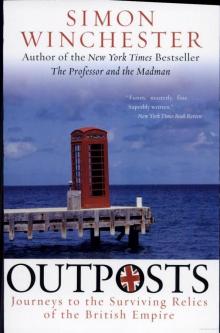 Outposts: Journeys to the Surviving Relics of the British Empire
Outposts: Journeys to the Surviving Relics of the British Empire Atlantic: Great Sea Battles, Heroic Discoveries, Titanic Storms
Atlantic: Great Sea Battles, Heroic Discoveries, Titanic Storms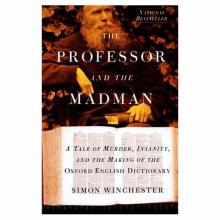 The Professor and the Madman: A Tale of Murder, Insanity
The Professor and the Madman: A Tale of Murder, Insanity A Crack in the Edge of the World
A Crack in the Edge of the World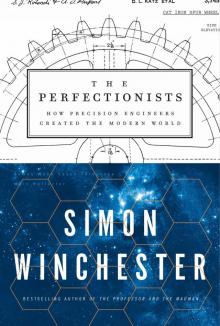 The Perfectionists: How Precision Engineers Created the Modern World
The Perfectionists: How Precision Engineers Created the Modern World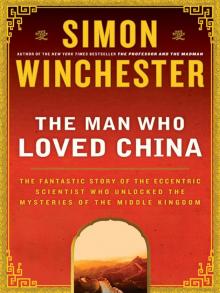 The Man Who Loved China: The Fantastic Story of the Eccentric Scientist
The Man Who Loved China: The Fantastic Story of the Eccentric Scientist The River at the Center of the World: A Journey Up the Yangtze
The River at the Center of the World: A Journey Up the Yangtze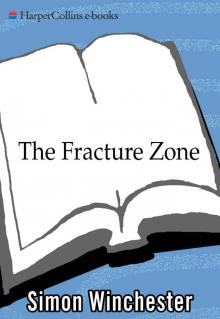 The Fracture Zone: My Return to the Balkans
The Fracture Zone: My Return to the Balkans The Map That Changed the World
The Map That Changed the World Krakatoa: The Day the World Exploded
Krakatoa: The Day the World Exploded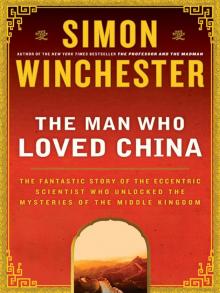 The Man Who Loved China
The Man Who Loved China The River at the Centre of the World
The River at the Centre of the World Bomb, Book and Compass
Bomb, Book and Compass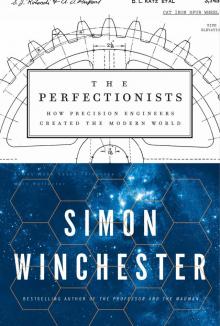 The Perfectionists
The Perfectionists The Meaning of Everything
The Meaning of Everything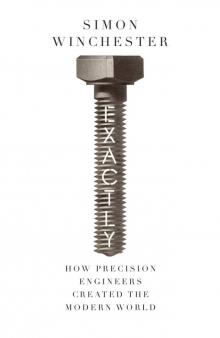 Exactly
Exactly Atlantic
Atlantic Korea
Korea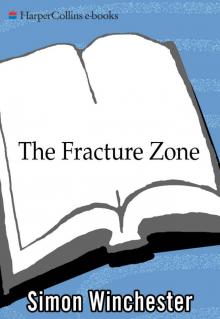 The Fracture Zone
The Fracture Zone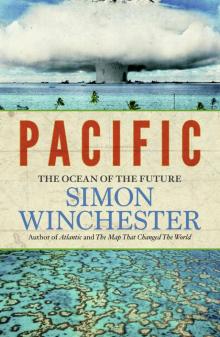 Pacific
Pacific Krakatoa
Krakatoa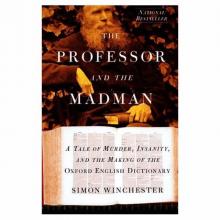 The Professor and the Madman
The Professor and the Madman Outposts
Outposts